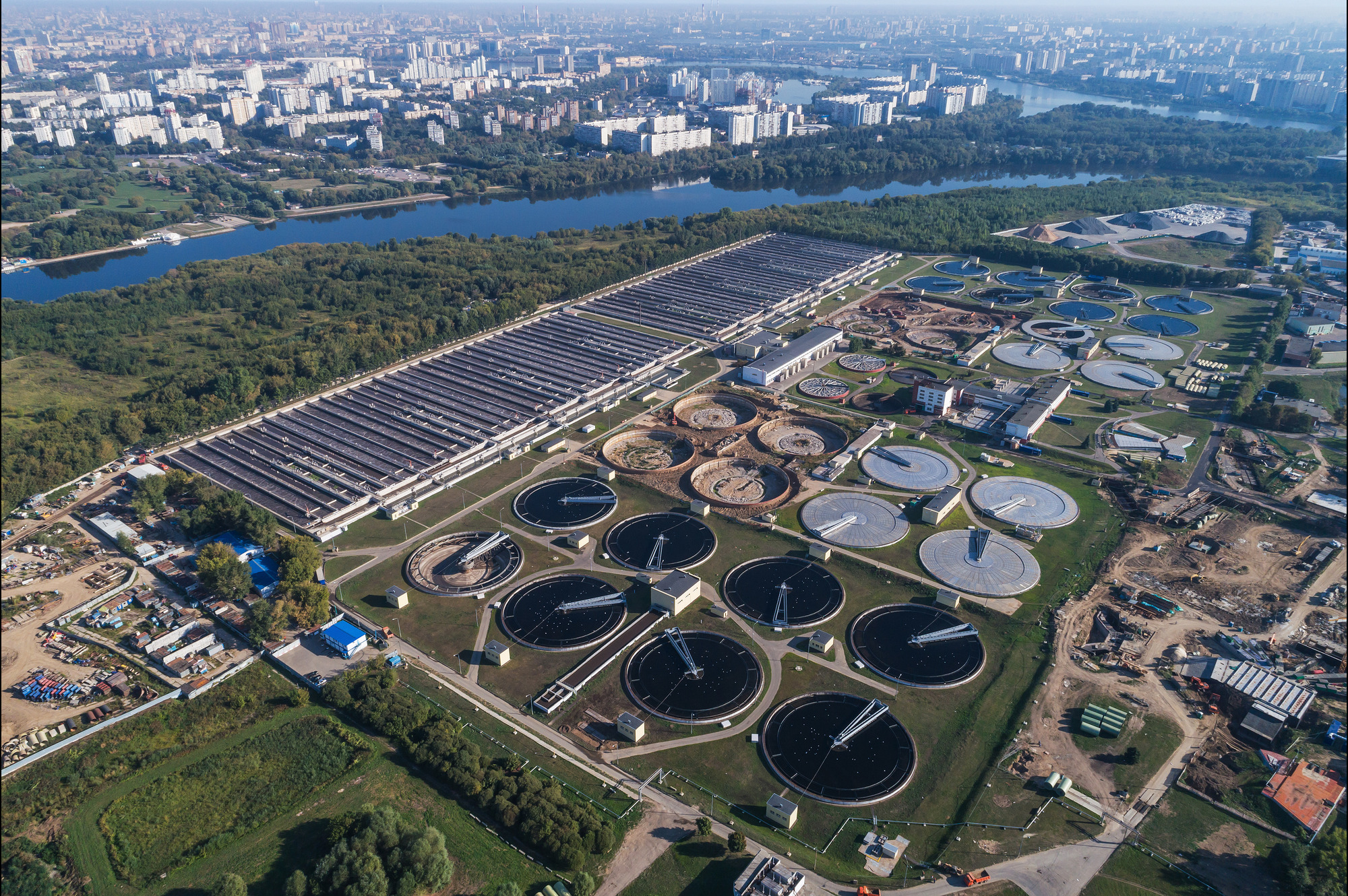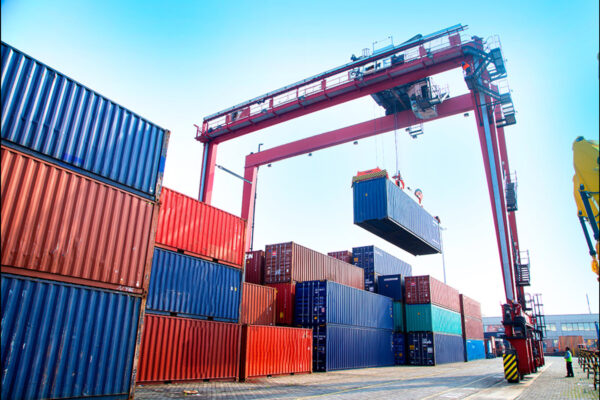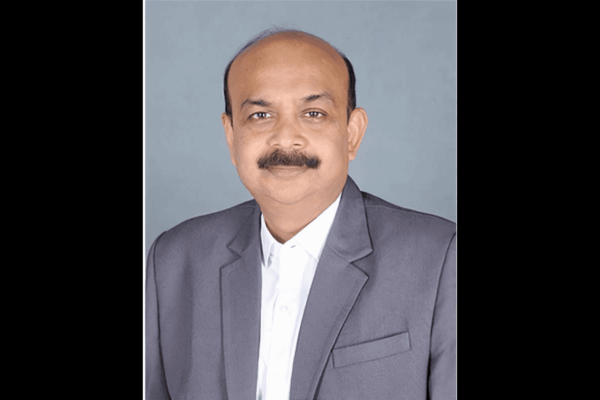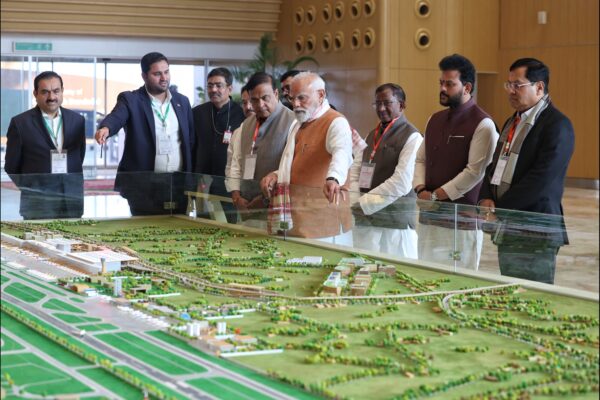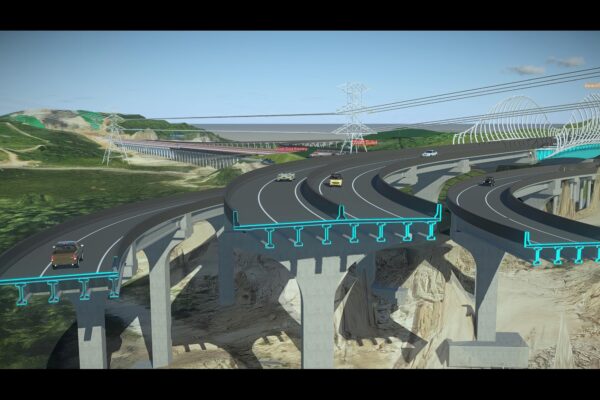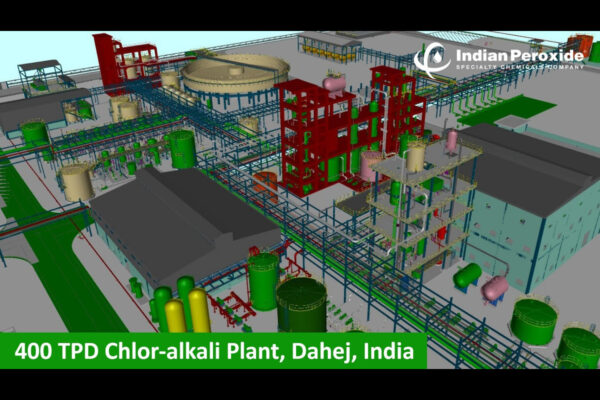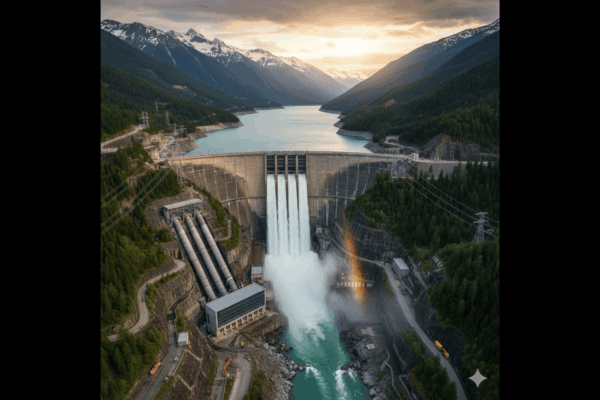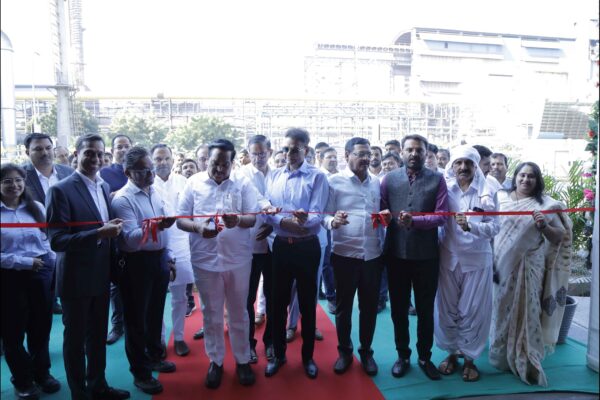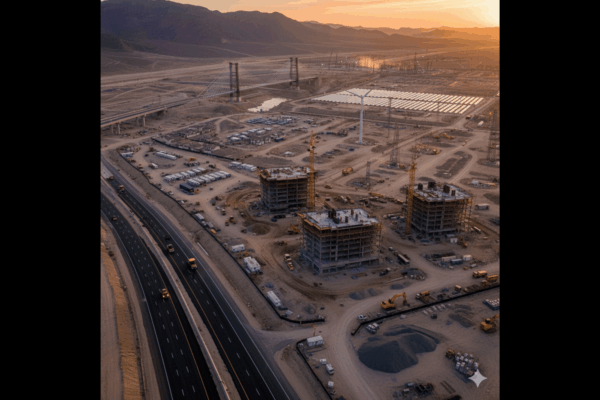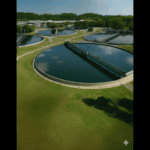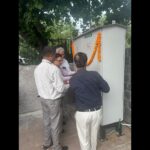Wastewater Management: Reclaiming it drop by drop
Amid shrinking freshwater reserves and rapid urban expansion, wastewater is emerging as an unlikely saviour. Recognising this potential, the government has launched several initiatives aimed at recycling wastewater and improving sewage treatment infrastructure to ensure long-term water security. Read on…
“Many a war has been fought over water.” While the phrase may seem poetic, history attests that water — the most essential of natural resources — has often been a catalyst for conflict, both in antiquity and in modern geopolitics. A recent illustration is the heightened tension between India and Pakistan following the terrorist attack in Pahalgam, which claimed the lives of 26 innocent civilians. In response, India not only launched targeted strikes on militant camps across the border but also suspended aspects of the Indus Waters Treaty (IWT) — the longstanding water-sharing agreement between the two nations. This action affected water flows to key Pakistani provinces such as Sindh and Punjab, underlining how water can shift from a shared resource to a strategic instrument of statecraft in times of political strain. Across the globe, water remains a flashpoint in international relations. One prominent example is the ongoing Nile River dispute. In 2020, Ethiopia unilaterally began filling the Grand Ethiopian Renaissance Dam (GERD) on the Blue Nile, without a binding agreement with downstream nations Egypt and Sudan. Egypt, which depends on the Nile for over 90% of its freshwater supply, perceives the dam as an existential threat. The situation has triggered diplomatic standoffs, UN interventions, and the threat of military escalation — illustrating how access to water can define national security postures. Another case is the Tigris–Euphrates river basin, shared by Turkey, Syria, and Iraq. Since the 1970s, Turkey’s construction of large-scale dams under its Southeastern Anatolia Project (GAP) has significantly reduced the flow of water downstream. Iraq and Syria have repeatedly expressed concern over declining water levels, which have impacted agriculture, drinking water availability, and overall economic stability. Tensions have occasionally flared, with threats of conflict over what is increasingly seen as a controlled choke point on a vital resource. Similarly, in Central Asia, disputes over the Amu Darya and Syr Darya rivers — which flow through Tajikistan, Kyrgyzstan, Uzbekistan, Turkmenistan, and Kazakhstan — have intensified since the dissolution of the Soviet Union. Upstream countries like Tajikistan and Kyrgyzstan have focused on hydropower development, while downstream nations, heavily reliant on consistent water flows for irrigation, oppose these moves. The absence of a binding regional water-sharing agreement has led to repeated political tensions and raised fears of future resource-based instability in the region.
Closer to home, India too has witnessed deep and prolonged disputes over water within its borders. The most notable among them is the Cauvery River water dispute, which has persisted for over a century between Karnataka and Tamil Nadu. Despite the Supreme Court’s final verdict in 2018, tensions often resurface during lean monsoon years, underlining how inter-state water management remains politically and emotionally charged. Another long-standing conflict is the Krishna River dispute, involving Maharashtra, Karnataka, Andhra Pradesh, and Telangana. Despite the establishment of the Krishna Water Disputes Tribunal and successive efforts at resolution, disagreements persist. The Polavaram project, a multipurpose irrigation and hydropower initiative on the Godavari River in Andhra Pradesh, has emerged as a point of contention with Odisha, Chhattisgarh, and Telangana. These states have raised concerns over submergence, displacement, and ecological damage, despite the project being declared a national one by the central government. Further north, the Punjab–Haryana water dispute over the Satluj–Yamuna Link (SYL) canal has been festering since the 1960s. Punjab has opposed the canal’s construction, citing reduced water availability, while Haryana insists on its rightful share of river waters. Despite Supreme Court directives, implementation has stalled due to political and social opposition, making it one of India’s most politically sensitive water disputes.
Water crisis a harsh reality
This underscores a harsh reality: water is perhaps the single most critical resource over which not just countries and states, but even neighbouring communities are willing to engage in conflict. Yet, tragically, potable water is depleting at an alarming pace. While nearly 70% of the Earth’s surface is covered by water, only 2.5% is freshwater, and a mere fraction of that is actually usable. In fact, just 0.5% of the world’s total water is accessible freshwater — the rest is either locked away in glaciers, ice caps, deep underground aquifers, or is heavily polluted. India must act swiftly and decisively — or access to potable water may soon become an insurmountable challenge. Rapid urbanisation is adding significant pressure to already strained water infrastructure. According to SBI Research, India’s urban population, which accounted for 31.1% of the total in the 2011 Census, is projected to rise to 35–37% in the upcoming 2024 Census. This demographic shift will intensify demand for essential urban services — especially the availability of safe drinking water.
Recognising this, the government has begun prioritising wastewater treatment and reuse in urban areas. Globally, countries like Israel and Singapore have set benchmarks by treating and reusing nearly 90% of their wastewater. Israel channels most of its reclaimed water for agricultural use, while Singapore’s NEWater system treats sewage to ultra-clean standards for industrial use and even supplements drinking water. These models have enabled both nations to withstand prolonged water stress and reduce dependence on natural freshwater sources.
Securing tomorrow: Government initiatives
To address the growing challenge, India has undertaken several ambitious initiatives to improve wastewater management and ensure water security, particularly in urban areas. The government is making every effort to educate the public on the importance of water conservation. To address the severe water scarcity in the country, it launched the Jal Jeevan Mission – ‘Har Ghar Jal’ initiative in 2019, a time-bound mission aimed at improving water availability, including groundwater conditions, in the water-stressed blocks of 256 districts across India. Demonstrating its commitment to resolving the water crisis, the government also established the Ministry of Jal Shakti. In 2021, the Jal Shakti Abhiyan: Catch the Rain campaign was launched, under which various rainwater conservation activities were carried out in all districts across the country. To improve water availability in water-scarce regions, the government formulated the National Perspective Plan (NPP) for Water Resources Development, which envisages the transfer of water from surplus basins to deficit basins. To ensure that every household has access to a tap connection with assured water supply, the government launched the Atal Mission for Rejuvenation and Urban Transformation (AMRUT) in 500 selected cities and towns across the country. Focusing on the development of basic urban infrastructure, the Ministry of Housing & Urban Affairs has also formulated guidelines for states to adopt measures suitable to local conditions to promote groundwater recharge. Adequate emphasis has been placed on the need for rainwater harvesting and water conservation. The Central Ground Water Board (CGWB), in consultation with states and union territories (UTs), has developed a Master Plan that envisages the construction of approximately 1.42 crore rainwater harvesting and artificial recharge structures across the country to harness 185 billion cubic metres (BCM) of monsoon rainfall. The central government has allocated Rs.62,935.90 crore for sewerage and septage projects under the AMRUT 2.0 (Atal Mission for Rejuvenation and Urban Transformation) scheme. These projects aim to establish an extensive 29,105 km sewerage network and enhance sewage treatment capacity by 5,791.94 million litres per day (MLD).
Uniting for water: Communities and nations take action
To help alleviate the water crisis, the Bangalore Apartment Federation (BAF) has signed a Memorandum of Understanding (MoU) with the Bangalore Water Supply and Sewerage Board (BWSSB) to supply treated water from apartment complexes and gated communities for commercial use. The Surat Municipal Corporation has entered into MoUs with three industrial entities located outside city limits to supply treated wastewater and generate revenue. This project, being developed at a cost of Rs.250 crore, will have approximately 50 percent of its capital expenditure covered by the state government. Similarly, the Vadodara Municipal Corporation (VMC) has raised Rs.100 crore through its Certified Green Municipal Bond for Sustainable Water Infrastructure. The bond proceeds will be utilised for three projects, including a 100 MLD sewage treatment plant (STP) at Sherkhi. The Haryana government has come up with Treated Waste Water Policy, targeting 50 percent reuse through irrigation, power plants, and industries by 2025, and scaling up to 80 percent by 2030. To prevent further pollution of the Musi River, the Telangana government is constructing 39 Sewerage Treatment Plants (STPs) as part of the Musi Riverfront Development Project (MRDP).
Bridging the gaps: Tackling challenges
Despite notable strides in wastewater management, India faces a host of challenges that hinder the sector’s full potential. A primary concern is the mismatch between sewage generation and treatment capacity—with only around 28–33% of wastewater treated nationally, the rest is often discharged untreated into rivers and water bodies, causing severe environmental and public health risks. Infrastructure gaps, particularly in smaller towns and peri-urban areas, further compound the problem. Many existing Sewage Treatment Plants (STPs) operate at suboptimal efficiency due to outdated technology, frequent power shortages, underskilled manpower, and high operational costs. Additionally, the sector suffers from fragmented governance, with overlapping responsibilities among municipal bodies, state agencies, and private operators leading to implementation delays. Public awareness around wastewater reuse and recycling remains limited, and policy enforcement is often inconsistent. Financing also remains a bottleneck, especially for decentralised or advanced treatment solutions that require significant capital investment and long-term maintenance. Addressing these systemic challenges will require coordinated planning, capacity building, and a stronger push for public-private collaboration across the water value chain.
Harnessing wastewater
The world urgently needs not only freshwater but also a reliable supply of water for everyday use in homes, offices, agriculture, and industries. Driven by rising population, rapid urbanisation, and accelerating industrial activity, global demand for water is set to triple over the coming decades. In India, this demand surge is already being felt acutely. With Tier I and Tier II cities expanding and rural areas increasingly becoming urbanised, the pressure on water resources is reaching a critical point. As more people move to cities, municipal infrastructure—particularly in water supply and wastewater treatment—must evolve swiftly to match the pace of development. The increased stress on urban water supply systems has prompted both the public and private sectors to re-evaluate the role of wastewater treatment. Once seen as a compliance formality or an added cost, wastewater management is now being recognised as an essential pillar of sustainable growth. Government-enforced regulatory frameworks and stringent environmental norms have compelled industries to invest in Sewage Treatment Plants (STPs) and Effluent Treatment Plants (ETPs). The Zero Liquid Discharge (ZLD) policy for highly polluting sectors is one such example that has accelerated industrial participation in water reuse and recycling. Moreover, growing environmental consciousness among citizens, industries, and city governments is paving the way for decentralised wastewater treatment solutions and community-driven initiatives. Sectors that were traditionally hesitant to adopt water treatment technologies—such as real estate, small-scale manufacturing, and hospitality—are now increasingly embracing them. From industrial clusters adopting Common Effluent Treatment Plants (CETPs) to residential townships installing compact STPs, the shift toward proactive water stewardship is gaining momentum.
This transformation is also attracting strong interest from global water technology firms. Recognising India’s vast market potential, several multinational companies have entered the Indian market, either through local subsidiaries or joint ventures with domestic players. Indian companies, too, are scaling up innovation by developing cost-effective, modular, and energy-efficient treatment technologies tailored for the country’s diverse needs. According to a 2024 report by Market Research Future, the Indian water treatment market is valued at USD 2.30 billion and is expected to grow to USD 6.30 billion by 2034, reflecting a robust CAGR of 10.60%. This strong growth outlook reflects increasing demand from municipalities, infrastructure projects, and industrial corridors—not only for treatment plants but also for integrated solutions encompassing water recycling, sludge management, digital monitoring, and energy recovery. India’s wastewater challenge is formidable, but it also presents a defining opportunity. With the right blend of policy reforms, financing mechanisms, private sector engagement, and citizen participation, wastewater can be transformed from an environmental liability into a strategic resource. Cities can become more water-resilient, industries more efficient, and communities more secure. The shift in mindset—from “treat and dispose” to “treat and reuse”—is already underway. The time to act decisively is now. Reimagining wastewater as a renewable, recoverable asset will be key to building a clean, water-secure, and climate-resilient India for generations to come.
Tags

